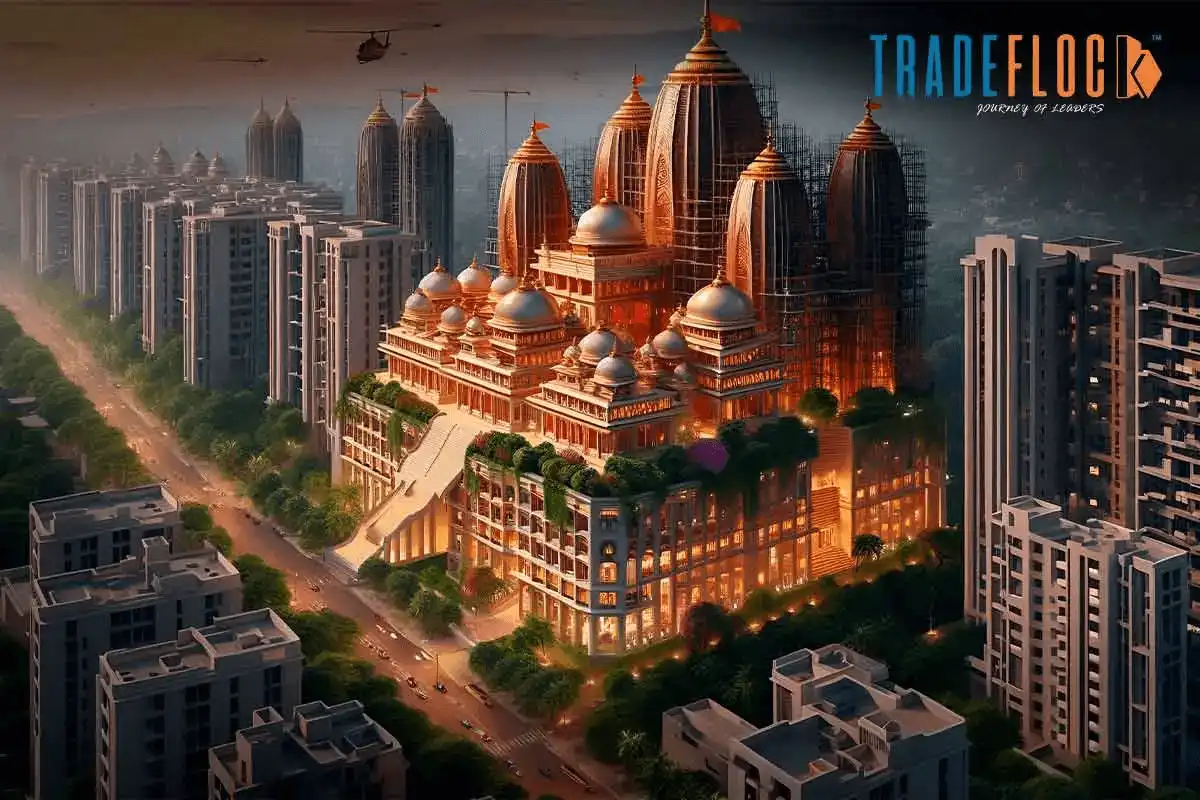On January 22, 2024, India witnessed the consecration of the Ram Mandir in Ayodhya. It was a much-awaited event that billions of Indians looked forward to. For this event, the government developed infrastructure in the surrounding areas of Ayodhya, including airports, hotels, roadways, etc. In a spiritual and devotional country like India, there is a trend of infra-development around sacred or religious places, termed sacred real estate. This sacred real estate has attracted more than a billion tourists nationwide.
In 2017, the National Sample Survey Office estimated that India’s religious travel economy was around $3 billion. Moreover, in 2022, a whopping 1.4 billion Indian residents and 7 million international tourists visited religious places in India, accounting for a whopping $16 billion in revenue. This increase in the number of tourists in religious areas has also impacted the country’s real estate, as the development of Sacred sites has given rise to high real estate prices. This is especially true for Ayodhya.
Ever since the Supreme Court’s verdict on Ramjanmbhoomi, the real estate price in Ayodhya has skyrocketed. After the verdict, the land cost in Ayodhya city increased from ₹700 to ₹800 per square foot to ₹1500 to ₹3000 per square foot, whereas in the outskirts of the city, it went from ₹1000 to ₹2000 per square foot to ₹4000 to ₹6000 per square foot. In addition, the mandir’s construction has attracted many new projects to the city.
One prime example is the 7-star mixed development of the House Of Abhinandan Lodha (HoABL), where a 10,000-square-foot plot was recently bought by Amitabh Bachchan, which is estimated to be worth around ₹15 Crore. Also, Forbes reported that around 100 new hotels are expected to be constructed in Ayodhya, mostly by the Raddisson and OYO, out of which 40 are currently under construction.
Another sacred infrastructure development the government did was the Kashi Vishwanath Corridor, which spans various cities, including Varanasi and Ayodhya. Due to this, the demand for land to construct hotels, restaurants and retirement homes in sacred places has increased quite a bit. The Abhinanadan Lodha group has invested more than ₹2000 crore to develop infrastructure in these places and according to the Indian Brand Equity Foundation (IBEF), around 70 to 100 hotels are expected to open near religious establishments, and more than 100 existing establishments are expected to be remodelled.
The impact of sacred real estate is not just economic. The innovative and state-of-the-art technology and techniques used in constructing these sacred sites can also be used in commercial and residential infrastructure. For instance, the Ram Temple in Ayodhya was made using eco-friendly materials like sandstone. On the other hand, the Kashi Vishwanath corridor also used modular construction techniques, where individual parts of a building were constructed off-site and then assembled on-site. This reduced the cost while significantly reducing the construction time.






